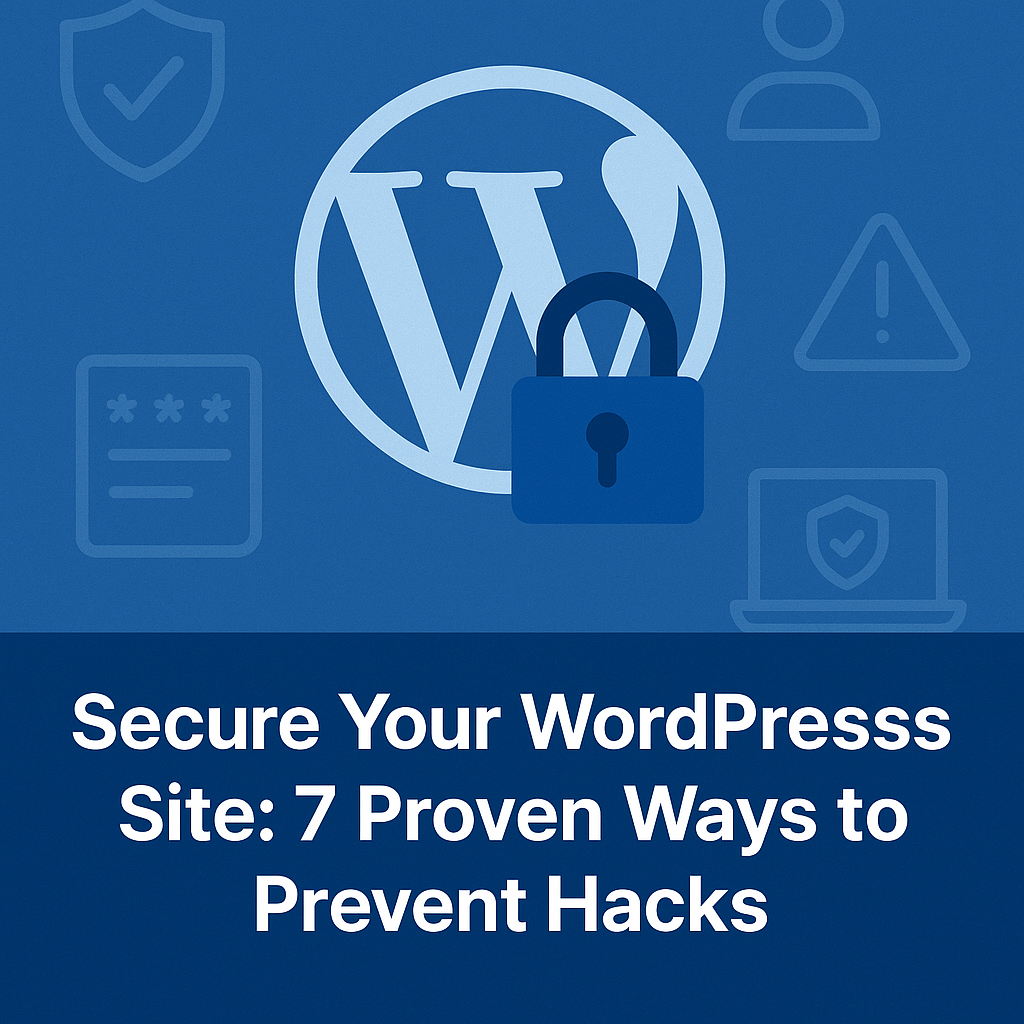Secure Your WordPress Site: 7 Proven Ways to Prevent Hacks

Secure Your WordPress Site: 7 Proven Ways to Prevent Hacks
If you run a website, it’s crucial to Secure Your WordPress Site in 2025. WordPress powers over 43% of all websites online, making it one of the most frequent targets for hackers. Failing to Secure Your WordPress Site can result in lost data, compromised SEO rankings, and broken visitor trust. In this guide, we’ll show you step-by-step how to protect your website effectively.
In this guide, you’ll learn proven techniques to protect your WordPress site from hacks and improve your overall website security.
Why WordPress Sites Get Hacked
WordPress websites can be vulnerable for several reasons:
- Outdated core software or plugins
- Weak admin passwords
- Lack of security plugins
- Poor hosting security
To keep your site safe, it’s crucial to address these weak points early.
1️⃣ Use Strong Passwords to Secure Your WordPress Site
One of the simplest ways to enhance your WordPress security is by using strong passwords. Avoid using predictable combinations like “admin123” or “password”.
Additionally, enable two-factor authentication (2FA) using plugins like Wordfence or Google Authenticator. This adds an extra layer of protection against unauthorized access. This is one of the simplest yet most effective ways to Secure Your WordPress Site.
2️⃣ Regularly Update Your Site to Help Secure Your WordPress Site
Outdated software often contains security vulnerabilities. Regularly updating your WordPress core, themes, and plugins is a critical step to prevent WordPress hacks.
Set automatic updates for minor releases, and always test major updates on a staging site before applying them to your live website.
👉 Also read: 10 Proven Tips to Speed Up Your WordPress Website in 2025
3️⃣ Install a Reliable Security Plugin for WordPress Protection
A solid security plugin can act as your website’s first line of defense. Tools like Wordfence and Sucuri Security offer malware scanning, firewall protection, and real-time monitoring.
Read more about website protection on Sucuri’s official guide.
4️⃣ Set Up Regular Backups for Your WordPress Site
If a hack occurs, having a recent website backup can save you hours of downtime and lost data. Use reliable backup plugins like UpdraftPlus or BlogVault to schedule automatic backups of your entire site.
5️⃣ Change the Default Login URL to Secure Your WordPress Site
By default, WordPress login pages are accessible via yoursite.com/wp-admin. Hackers use this to target sites with brute-force attacks.
You can easily change this using plugins like WPS Hide Login to customize your login URL.
6️⃣ Limit Login Attempts on Your WordPress Site
Brute-force attacks rely on guessing your username and password combinations. Limiting the number of login attempts blocks suspicious IP addresses after a set number of failed tries.
Wordfence and Limit Login Attempts Reloaded are great plugins for this purpose.
7️⃣ Use SSL Certificates to Secure Your WordPress Site
An SSL certificate encrypts data transferred between your website and visitors. This is crucial for protecting login credentials and sensitive information.
Most hosting providers, like Hostinger, offer free SSL certificates with their hosting plans.
Conclusion
Securing your WordPress site doesn’t have to be complicated. By implementing these essential website protection tips — from strong passwords to reliable security plugins — you can significantly reduce your risk of being hacked.
Maintaining a secure WordPress site will also improve your search rankings and build visitor trust.
Remember: Consistency is key. Make website security part of your routine maintenance and stay updated with new threats and solutions.



